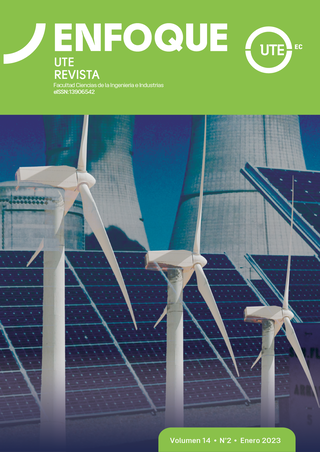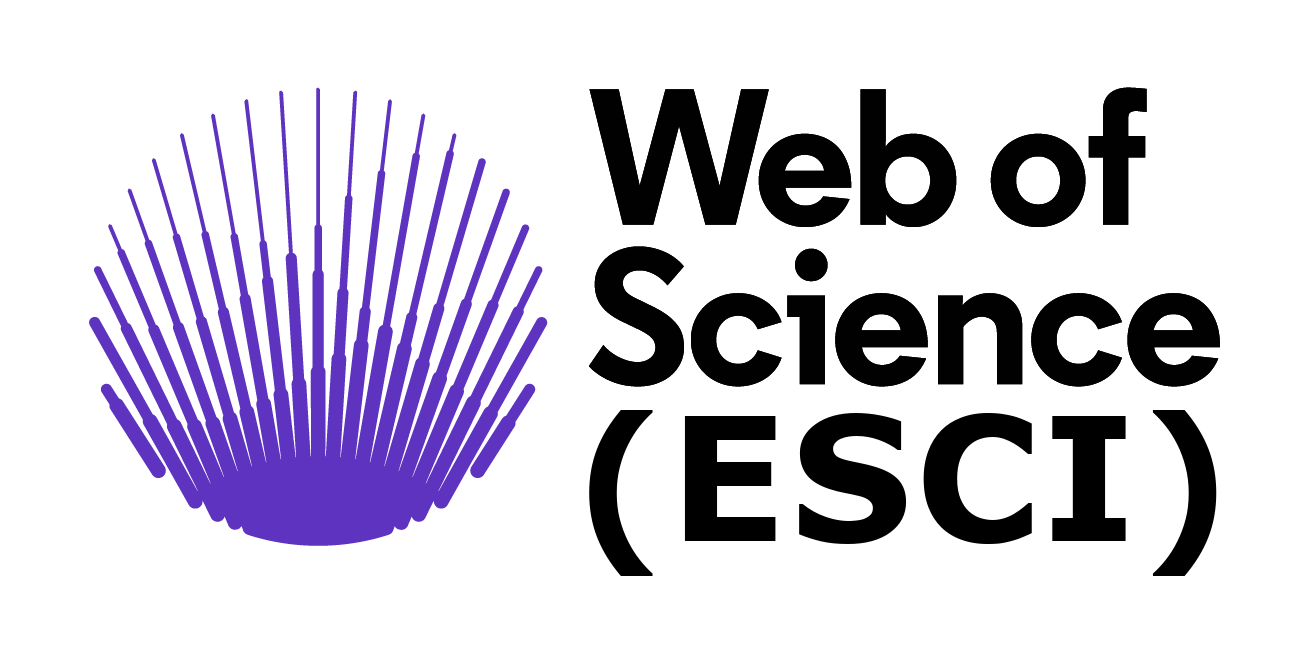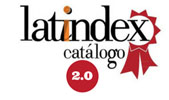Modelación hidrológica de la cuenca urbana del río Bélico en la ciudad de Santa Clara, Cuba
DOI:
https://doi.org/10.29019/enfoqueute.888Palabras clave:
escirrentía, lluvia, inundaciones urbanas, modelación hidrológica, número de curvaResumen
Las inundaciones urbanas son un fenómeno asociado a grandes precipitaciones en relativamente cortos períodos de tiempo, las causas que las provocan son disímiles y generalmente vienen acompañadas por una deficiente planificación urbana. La ciudad de Santa Clara, Cuba, presenta graves problemas de inundaciones cercanos a los ríos Bélico y Cubanicay debido a la disminución de la sección de sus cauces por indisciplinas urbanísticas. La presente contribución obtiene los valores del caudal máximo de escurrimiento para varias secciones de control ubicadas a lo largo de dichos ríos, usando para ello el modelo TR-55 (Technical Report 55) del Servicio de Conservación de los Recursos Naturales de Estados Unidos. Se realizan tres modelaciones asociadas a lluvias convectivas Tipo I, II, III, agrupadas a los picos de las tormentas y su ubicación temporal, con lo cual se pueden definir los gastos máximos relacionados con tormentas de configuración diferentes para una probabilidad del 1%, 2% y 10%. Los resultados obtenidos demuestran que la situación más crítica ocurre para la lluvia Tipo III y el valor máximo de escurrimiento para una probabilidad del 1% en el punto de cierre de la cuenca es de 170 m3/s.
Descargas
Referencias
Ballinas-González, H. A., Alcocer-Yamanaka, V. H., Canto-Rios, J. J. y Simuta-Champo, R. (2020). Sensitivity Analysis of the Rainfall-Runoff Modeling Parameters in Data-Scarce Urban Catchment. Hydrology, 7(4). https://doi.org/10.3390/hydrology7040073/
Beven, K. J. (2020). A history of the concept of time of concentration. Hydrol. Earth Syst. Sci., 24(5), 2655-2670. https://doi.org/10.5194/hess-24-2655-2020/
Boyd, O., Grounds, R. M., & Bennett, E. D. (1993). A randomized clinical trial of the effect of deliberate perioperative increase of oxygen delivery on mortality in high-risk surgical patients. Jama, 270(22), 2699-2707.
Campos, J. N. B., Studart, T. M., Souza Filho, F. D. y Porto, V. C. (2020). On the Rainfall Intensity-Duration-Frequency Curves, Partial-Area Effect and the Rational Method: Theory and the Engineering Practice. Water, 12(10). https://doi.org/10.3390/w12102730/
Castillo, C., Abreu Franco, D. E. y Álvarez González, M. (2021). Evaluación de distintas fórmulas empíricas para el cálculo del tiempo de concentración en la cuenca urbana del río Bélico y Cubanicay, ciudad de Santa Clara. Enfoque UTE, 12, 51-64. https://doi.org/10.29019/enfoqueute.729/
Castillo, C., Domínguez, I. y Martínez, Y. (2022). Modelos paramétricos de distribución temporal de precipitaciones en la estación meteorológica Yabú de la provincia Villa Clara, Cuba. Tecnologías y Ciencias del Agua. Preprint. doi: https://doi.org/10.24850/j-tyca-14-4-4/
Castillo, C., Domínguez, I., Martínez, Y. y Abreu, D. (2022). Curvas de Intensidad-Duración-Frecuencia para la ciudad de Santa Clara, Cuba. Tecnologías y Ciencias del Agua. Preprint. doi: https://doi.org/ 10.24850/j-tyca-15-1-9/
Chin David, A. (2019). Estimating Peak Runoff Rates Using the Rational Method. Journal of Irrigation and Drainage Engineering, 145(6), 04019006. https://doi.org/10.1061/(ASCE)IR.1943-4774.0001387/
Chow, Y. S., Moriguti, S., Robbins, H., & Samuels, S. M. (1964). Optimal selection based on relative rank (the “secretary problem”). Israel Journal of mathematics, 2(2), 81-90.
Dhakal, N., Fang, X., Thompson, D. B., & Cleveland, T. G. (2014, July). Modified rational unit hydrograph method and applications. In Proceedings of the Institution of Civil Engineers-Water Management (Vol. 167, No. 7, pp. 381-393). Thomas Telford Ltd.
Deb, P., y Kiem, A. S. (2020). Evaluation of rainfall–runoff model performance under non-stationary hydroclimatic conditions. Hydrological Sciences Journal, 65(10), 1667-1684. https://doi.org/10.1080/02626667.2020.1754420/
Deb, P., Kiem, A. S. y Willgoose, G. (2019). A linked surface water-groundwater modelling approach to more realistically simulate rainfall-runoff non-stationarity in semi-arid regions. Journal of Hydrology, 575, 273-291. https://doi.org/https://doi.org/10.1016/j.jhydrol.2019.05.039/
Fraga, I., Cea, L. y Puertas, J. (2019). Effect of rainfall uncertainty on the performance of physically based rainfall–runoff models. Hydrological Processes, 33(1), 160-173.
https://doi.org/https://doi.org/10.1002/hyp.13319/
García, A., & Lenin, Y. (2022). Diseño hidráulico de obras de protección del margen derecho del río Coca; barrio Con Hogar ciudad del Coca (Bachelor's thesis, Quito: UCE).
Haan, C. T., Barfield, B. J., & Hayes, J. C. (1994). Design hydrology and sedimentology for small catchments. Elsevier.
Hasan, H. H., Mohd Razali, S. F., Ahmad Zaki, A. Z. y Mohamad Hamzah, F. (2019). Integrated Hydrological-Hydraulic Model for Flood Simulation in Tropical Urban Catchment. Sustainability, 11(23). https://doi.org/10.3390/su11236700/
Hettiarachchi, S., Wasko, C. y Sharma, A. (2019). Can antecedent moisture conditions modulate the increase in flood risk due to climate change in urban catchments? Journal of Hydrology, 571, 11-20. https://doi.org/10.1016/j.jhydrol.2019.01.039/
Hollis, G. E. (1975), The effect of urbanization on floods of different recurrence interval, Water Resour. Res., 11( 3), 431– 435, https://doi.org/10.1029/WR011i003p00431.
Hu, C., Wu, Q., Li, H., Jian, S., Li, N. y Lou, Z. (2018). Deep Learning with a Long Short-Term Memory Networks Approach for Rainfall-Runoff Simulation. Water, 10(11). https://doi.org/10.3390/w10111543/
Hu, C., Xia, J., She, D., Song, Z., Zhang, Y. y Hong, S. (2021). A new urban hydrological model considering various land covers for flood simulation. Journal of Hydrology, 603, 126833. https://doi.org/10.1016/j.jhydrol.2021.126833/
Joshi, N., Bista, A., Pokhrel, I., Kalra, A., y Ahmad, S. Rainfall-Runoff Simulation in Cache River Basin, Illinois, Using HEC-HMS. World Environmental and Water Resources Congress 2019, 348-360. https://doi.org/doi:10.1061/9780784482339.035/
K. N, V. (2021). “Runoff assessment by Storm water management model (SWMM)- A new approach”. Journal of Applied and Natural Science, 13(SI), 142-148. https://doi.org/10.31018/jans.v13iSI.2813/
Kader, M. Y. A., Bad, R. y Saley, B. (2020). Study of the 1D Saint-Venant Equations and Application to the Simulation of a Flood Problem. Journal of Applied Mathematics and Physics, 8(7), 14. https://doi.org/10.4236/jamp.2020.87090/
Karpathy Nicholas, S., y Chin David, A. (2019). Relationship between Curve Number and ϕ-Index. Journal of Irrigation and Drainage Engineering, 145(11), 06019009. https://doi.org/10.1061/(ASCE)IR.1943-4774.0001426/
Lee, J. G., & Heaney, J. P. (2003). Estimation of urban imperviousness and its impacts on storm water systems. Journal of Water Resources Planning and Management, 129(5), 419-426.
Leopold, L. B. (1968). Hydrology for urban land planning: A guidebook on the hydrologic effects of urban land use (Vol. 554). US Geolgoical Survey.
Lian, H., Yen, H., Huang, J.-C., Feng, Q., Qin, L., Bashir, M. A., Wu, S., Zhu, A. X., Luo, J., Di, H., Lei, Q. y Liu, H. (2020). CN-China: Revised runoff curve number by using rainfall-runoff events data in China. Water Research, 177, 115767. https://doi.org/https://doi.org/10.1016/j.watres.2020.115767/
Maidment, D. R. (1993). GIS and hydrologic modeling. Environmental modeling with GIS., 147-167.
Miller, A. J., Welty, C., Duncan, J. M., Baeck, M. L. y Smith, J. A. (2021). Assessing urban rainfall-runoff response to stormwater management extent. Hydrological Processes, 35(7). https://doi.org/https://doi.org/10.1002/hyp.14287/
Mishra, S.K., Singh, V.P. y Singh, P.K. (2018). Revisiting the Soil Conservation Service Curve Number Method. En Singh, V., Yadav, S., Yadava, R. (eds) Hydrologic Modeling. Water Science and Technology Library, 81. Springer, https://doi.org/10.1007/978-981-10-5801-1_46/
Moglen, G. E., McCuen, R. H., y Moglen, R. L. (2018). Consequences of Changes to the NRCS Rainfall-Runoff Relations on Hydrologic Design. Journal of Hydrologic Engineering, 23(8), 04018032. https://doi.org/10.1061/(ASCE)HE.1943-5584.0001681/
Musy, A., & Higy, C. (2004). Hydrologie: Une science de la nature (Vol. 21). PPUR presses polytechniques.
Nardi, F., Annis, A., y Biscarini, C. (2018). On the impact of urbanization on flood hydrology of small ungauged basins: the case study of the Tiber river tributary network within the city of Rome. Journal of Flood Risk Management, 11(S2), S594-S603. https://doi.org/https://doi.org/10.1111/jfr3.12186/
Ormsbee, L., Hoagland, S. y Peterson, K. (2020). Limitations of TR-55 Curve Numbers for Urban Development Applications: Critical Review and Potential Strategies for Moving Forward. Journal of Hydrologic Engineering, 25(4), 02520001. https://doi.org/10.1061/(ASCE)HE.1943-5584.0001885/
Poudel, U., Ahmad, S. y Stephen, H. (2020). Impact of Urbanization on Runoff and Infiltration in Walnut Gulch Experimental Watershed. Watershed Management 2020, 219-232. https://doi.org/doi:10.1061/9780784483060.020/
Richards, L. A., & Weaver, L. R. (1944). MOISTURE RETENTION BY SOME IRRIGATED SOILS AS. Journal of Agricultural Research, 69, 215.
Roohi, M., Soleymani, K., Salimi, M. y Heidari, M. (2020). Numerical evaluation of the general flow hydraulics and estimation of the river plain by solving the Saint–Venant equation. Modeling Earth Systems and Environment, 6(2), 645-658. https://doi.org/10.1007/s40808-020-00718-9
Ross, C. W., Prihodko, L., Anchang, J., Kumar, S., Ji, W. y Hanan, N. P. (2018). HYSOGs250m, global gridded hydrologic soil groups for curve-number-based runoff modeling. Scientific Data, 5(1), 180091. https://doi.org/10.1038/sdata.2018.91/
Schoener, G. (2018). Urban Runoff in the U.S. Southwest: Importance of Impervious Surfaces for Small-Storm Hydrology. Journal of Hydrologic Engineering, 23(2), 05017033. https://doi.org/10.1061/(ASCE)HE.1943-5584.0001610/
Stella, J. M., y Anagnostou, E. N. (2018). Modeling the flood response for a sub-tropical urban basin in south Florida. Tecnología y ciencias del agua, 9, 128-141. https://doi.org/10.24850/j-tyca-2018-03-05/
Valle Junior, L. C. G. D., Rodrigues, D. B. B. y Oliveira, P. T. S. D. (2019). Initial abstraction ratio and Curve Number estimation using rainfall and runoff data from a tropical watershed. RBRH, 24(0). https://doi.org/10.1590/2318-0331.241920170199/
Viessman, W., & Lewis, G. L. (1995). Introduction to Hydrology . Reading, MA: Addision.
Walega, A., Amatya, D. M., Caldwell, P., Marion, D. y Panda, S. (2020). Assessment of storm direct runoff and peak flow rates using improved SCS-CN models for selected forested watersheds in the Southeastern United States. Journal of Hydrology: Regional Studies, 27, 100645. https://doi.org/https://doi.org/10.1016/j.ejrh.2019.100645/
Wang, S., y Wang, H. (2018). Extending the Rational Method for assessing and developing sustainable urban drainage systems. Water Research, 144, 112-125. https://doi.org/https://doi.org/10.1016/j.watres.2018.07.022/
Wheater, H., Sorooshian, S., & Sharma, K. D. (Eds.). (2007). Hydrological modelling in arid and semi-arid areas. Cambridge University Press.
Wu, S.-J., Yeh, K.-C., Ho, C.-H. y Yang, S.-H. (2016). Modeling probabilistic lag time equation in a watershed based on uncertainties in rainfall, hydraulic and geographical factors. Hydrology Research, 47(6), 1116-1141. https://doi.org/10.2166/nh.2016.134/
Yao, L., Wei, W., Yu, Y., Xiao, J. y Chen, L. (2018). Rainfall-runoff risk characteristics of urban function zones in Beijing using the SCS-CN model. Journal of Geographical Sciences, 28(5), 656-668. https://doi.org/10.1007/s11442-018-1497-6/
Yogi, F., Correa, C. J. P., Arruda, E. M. y Tonello, K. C. (2021). Sensitivity analysis of rainfall–runoff parameters models to estimate flows. Applied Water Science, 11(2), 25. https://doi.org/10.1007/s13201-020-01348-3/
Descargas
Publicado
Número
Sección
Licencia
Derechos de autor 2023 Los Autores

Esta obra está bajo una licencia Creative Commons Reconocimiento 3.0 Unported.
Los autores retienen todos sus derechos (© copyright).
- Los autores retienen sus derechos de marca y patente, y también sobre cualquier proceso o procedimiento descrito en el artículo.
- Los autores retienen el derecho de compartir, copiar, distribuir, ejecutar y comunicar públicamente el artículo publicado en Enfoque UTE (por ejemplo, colocarlo en un repositorio institucional o publicarlo en un libro), siempre que se dé el reconocimiento de su publicación inicial en la revista Enfoque UTE.
- Los autores retienen el derecho a hacer una posterior publicación de su trabajo, de utilizar el artículo o cualquier parte de aquel (por ejemplo: una compilación de sus trabajos, notas para conferencias, tesis, o para un libro), siempre que indiquen la fuente de publicación (autores del trabajo, revista, volumen, número y fecha).
























